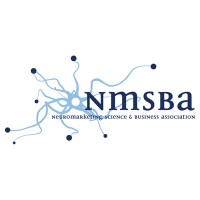
Attention is a complex mental process involving multiple cognitive and behavioral mechanisms, making it difficult to define in a clear and concise way.
In general, the “Attention” is the cognitive ability to select relevant information out of irrelevant noise, since the brain continuously receives a large number of sensory signals that cannot be fully processed (Cohen and Cohen, 2014).
The object of attention can be either environmental stimuli actively processed by the sensory systems, or associative information and response tendencies generated by ongoing cognitive activity. In all cases, attention is closely linked to the level of psychophysiological activation. Attention span can be characterized by two relatively independent components: selectivity (i.e the ability to focus cognitive resources on one or more elements) and intensity (i.e. the necessary condition for continuously responding in a reasonable manner to a series of events) (Sciaraffa et al., 2021).
While it is preferrable to assess the attentional selectivity dimension by means of ocular movements, i.e. eye tracking technology (Hoffman, 2016), several neurophysiological correlates in terms of brain activity have been provided with respect to the intensity of attention, i.e. vigilance and focal attention. With regard to attention intensity, scientific literature reports modulation of frontal theta, alpha, and beta brain rhythms (Berka et al., 2007; Klimesch, 2012), as well as variations in eye blink rate (Sciaraffa et al., 2021).
Building on this knowledge, BrainSigns employs eye-tracking-based indices to investigate the selective dimension of attention, while also analyzing electroencephalographic (EEG) activity—specifically frontal theta, alpha, and beta rhythms—to derive synthetic indicators of focal attention in neuromarketing contexts and vigilance in operational settings (Di Flumeri et al., 2019; Sebastiani et al., 2019).
BrainSigns offers services for measuring selective attention using eye-tracking, as well as focal attention and vigilance through proprietary algorithms grounded in scientific research; i.e. focal attention while exploring websites or watching audiovisual contents (Martinez-Levy, 2022 ); vigilance measurements for assessing drivers, aviation pilots and air traffic controllers (Di Flumeri et al., 2022 ; Ronca et al. 2023 ). Vigilance is one of the neurometrics available on the Mindtooth Neurometrics App, developed by BrainSigns.
REFERENCES
- Berka, Chris, et al. "EEG correlates of task engagement and mental workload in vigilance, learning, and memory tasks." Aviation, space, and environmental medicine 78.5 (2007): B231-B244.
- Cohen, Ronald A., and Ronald A. Cohen. "Models and mechanisms of attention." The neuropsychology of attention (2014): 265-280.
- Di Flumeri, Gianluca, et al. "Brain–computer interface-based adaptive automation to prevent out-of-the-loop phenomenon in air traffic controllers dealing with highly automated systems." Frontiers in human neuroscience 13 (2019): 296
- Di Flumeri, Gianluca, et al. "EEG-Based Index for Timely Detecting User’s Drowsiness Occurrence in Automotive Applications." Front. Hum. Neurosci. 16 (2022): 866118. doi: 10.3389/fnhum.2022.866118.
- Hoffman, James E. "Visual attention and eye movements." Attention (2016): 119-153.
- Klimesch, Wolfgang. "Alpha-band oscillations, attention, and controlled access to stored information." Trends in cognitive sciences 16.12 (2012): 606-617.
- Martinez-Levy, Ana C., et al. "Message framing, non-conscious perception and effectiveness in non-profit advertising. Contribution by neuromarketing research." International Review on Public and Nonprofit Marketing 19.1 (2022): 53-75.
- Posner, Michael I., and Steven E. Petersen. "The attention system of the human brain." Annual review of neuroscience 13.1 (1990): 25-42.
- Ronca, V.; Uflaz, E.; Turan, O.; Bantan, H.; MacKinnon, S.N.; Lommi, A.; Pozzi, S.; Kurt, R.E.; Arslan, O.; Kurt, Y.B.; et al. Neurophysiological Assessment of An Innovative Maritime Safety System in Terms of Ship Operators’ Mental Workload, Stress, and Attention in the Full Mission Bridge Simulator. Brain Sci. 2023, 13, 1319. https://doi.org/10.3390/brainsci13091319.
- Sciaraffa, Nicolina, et al. "Joint analysis of eye blinks and brain activity to investigate attentional demand during a visual search task." Brain Sciences 11.5 (2021): 562.
- Sebastiani, Marika, et al. "Neurophysiological vigilance characterisation and assessment: Laboratory and realistic validations involving professional air traffic controllers." Brain sciences 10.1 (2020).



